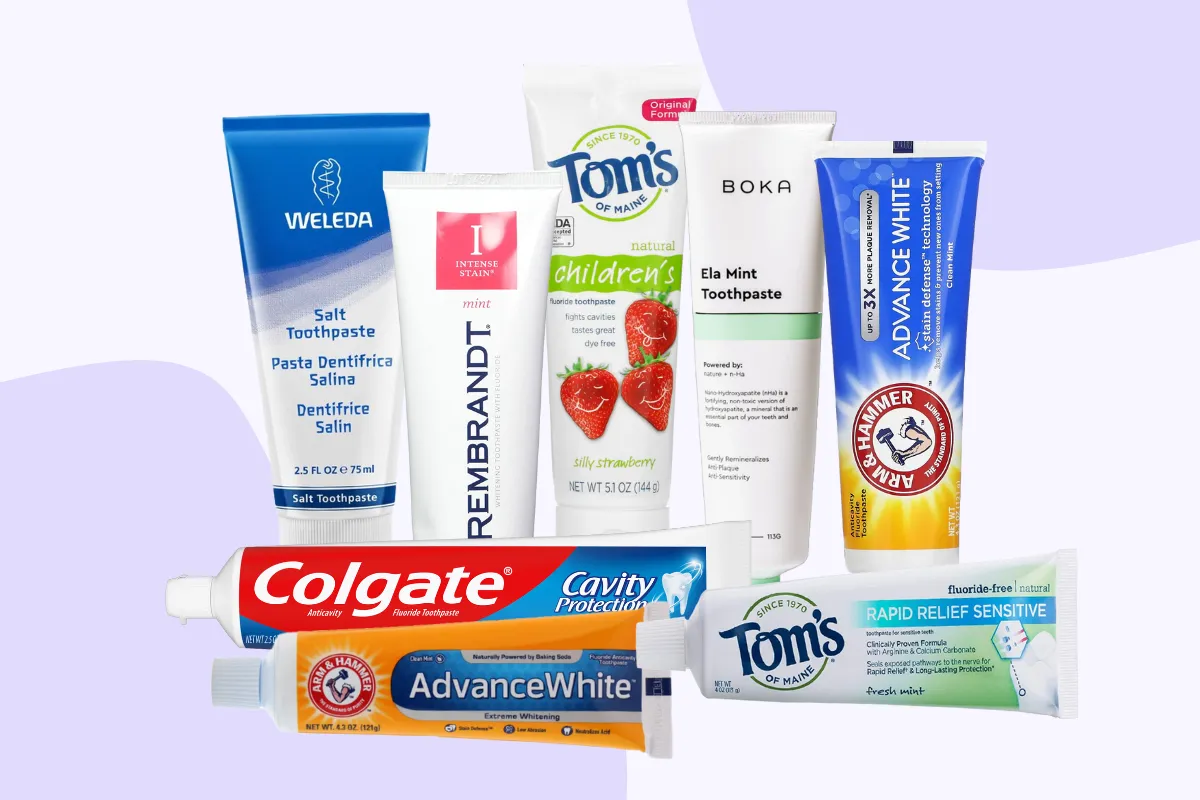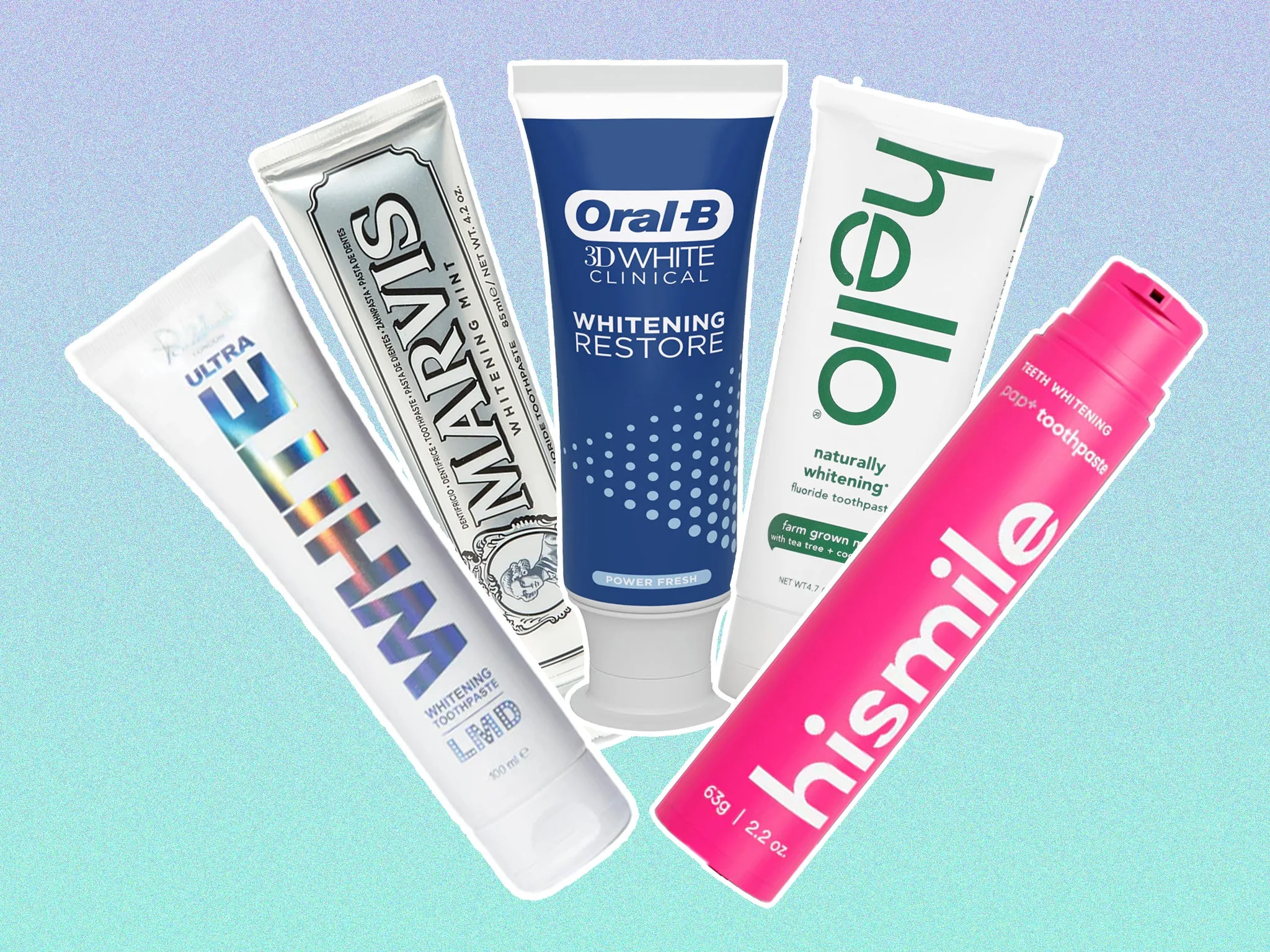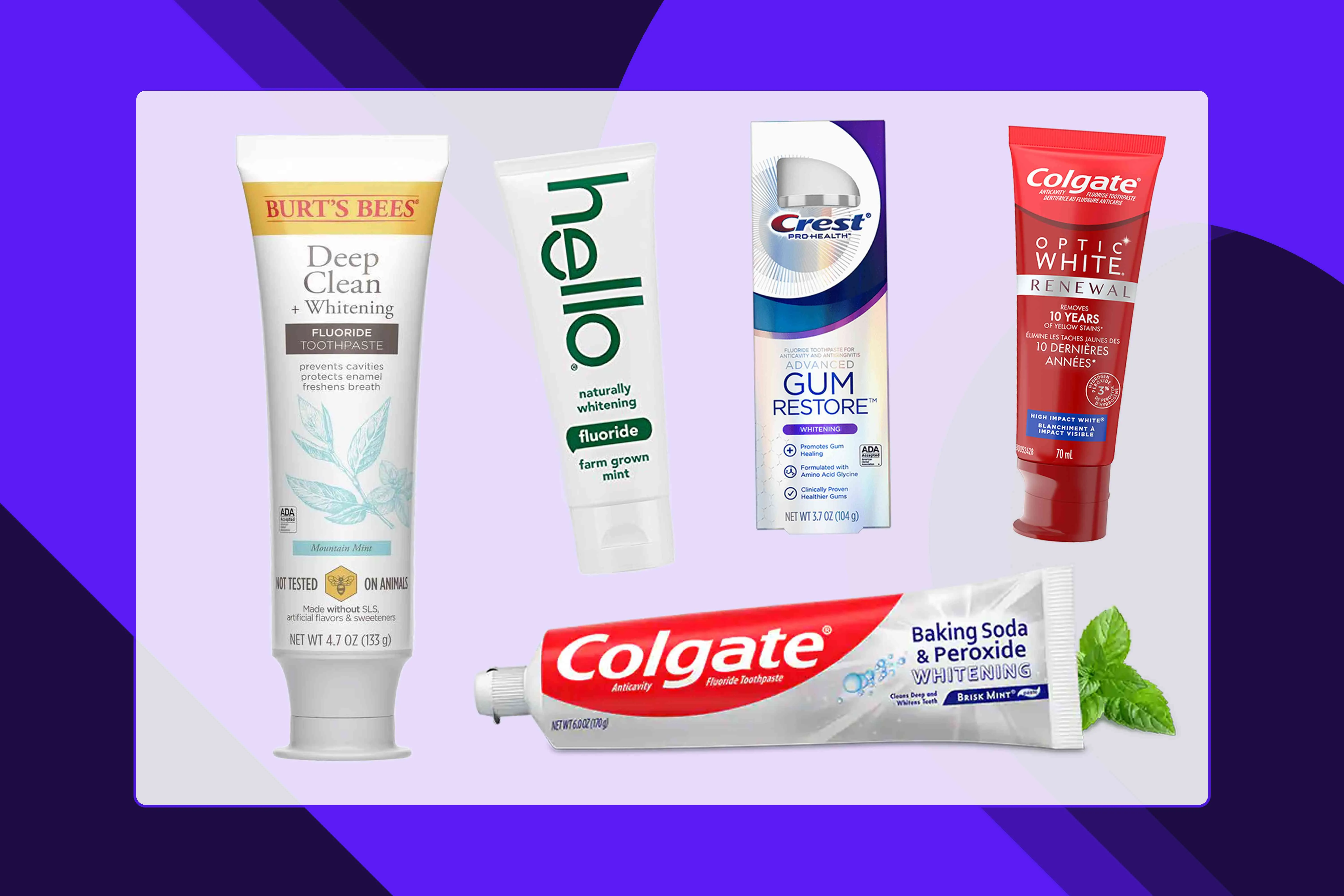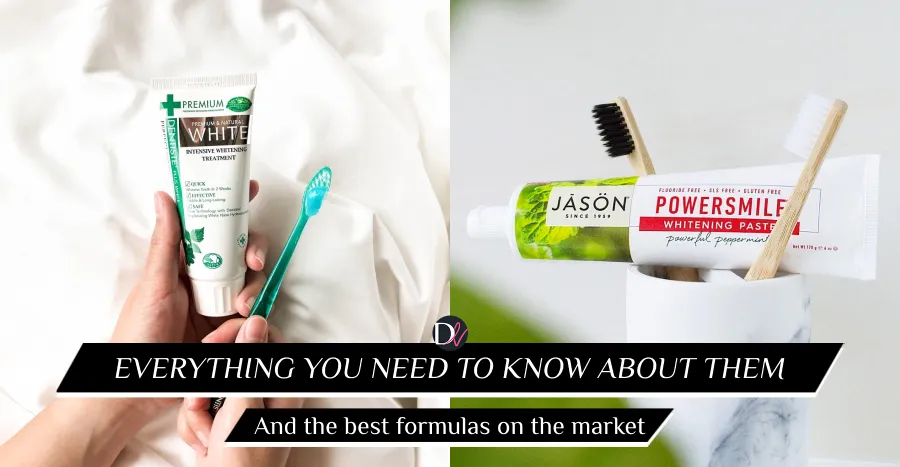Whitening Toothpaste Ten Facts for a Brighter Smile
Achieving a brighter, whiter smile is a common goal, and whitening toothpaste has become a staple in many people’s oral hygiene routines. But with a plethora of options available, it’s easy to get lost in the sea of promises and claims. This article unveils ten essential facts about whitening toothpaste, empowering you to make informed choices and achieve the radiant smile you desire. From understanding how these toothpastes work to navigating the potential drawbacks and exploring alternative whitening methods, this guide provides a comprehensive overview. Discover the key ingredients, learn how to choose the right product for your needs, and debunk common myths surrounding whitening toothpaste. Get ready to transform your smile and boost your confidence with the power of knowledge!
Understanding Whitening Toothpaste
What is Whitening Toothpaste

Whitening toothpaste is specifically formulated to remove surface stains from your teeth and, in some cases, provide a degree of whitening. Unlike regular toothpaste, it contains ingredients that help to break down or lift away stains caused by things like coffee, tea, wine, and tobacco. These toothpastes are designed to be an easy, at-home method to enhance your smile. The active ingredients work in different ways, from physically removing stains to chemically altering the tooth’s surface to appear whiter. They are widely accessible and come in various flavors and formulations, making them a popular choice for many seeking a brighter smile. The effects can range from subtle improvements to more noticeable whitening, depending on the product and your individual tooth characteristics.
How Does Whitening Toothpaste Work
Whitening toothpaste typically works through two primary mechanisms: abrasion and chemical action. Abrasive toothpastes contain mild abrasive particles that gently scrub away surface stains during brushing. These abrasives can include hydrated silica, calcium carbonate, or dicalcium phosphate. By physically removing the stains, the toothpaste reveals the natural color of your teeth. Chemically active toothpastes often use ingredients like hydrogen peroxide or carbamide peroxide to break down stains. These chemicals penetrate the enamel and react with the stain molecules, lightening their appearance. The effectiveness of each type can vary, with some toothpastes combining both abrasive and chemical actions for enhanced results. Understanding these mechanisms helps you appreciate how these products contribute to a brighter smile over time.
Different Types of Whitening Toothpaste
Whitening toothpaste comes in various formulations, each utilizing different ingredients and methods to achieve a brighter smile. These variations cater to different needs, sensitivities, and preferences. Some toothpastes focus on abrasive action to remove surface stains, while others incorporate chemical agents to penetrate the enamel. The choice of the right type depends on your specific goals and dental health. Exploring these different types can help you find the most suitable option for your teeth whitening journey. Remember to always consult your dentist for personalized recommendations.
Whitening Toothpaste with Abrasives

Abrasive whitening toothpastes rely on the physical removal of stains. They contain mild abrasive particles that gently scrub the tooth surface, dislodging stain molecules. Common abrasives include hydrated silica, calcium carbonate, and dicalcium phosphate. While effective at removing surface stains, these toothpastes may not alter the intrinsic color of your teeth. The abrasive action can, in some cases, lead to increased sensitivity if used excessively or if the enamel is already thin. Proper brushing technique is essential to avoid any potential damage. These toothpastes are suitable for individuals with surface stains from coffee, tea, or tobacco, and who are looking for a simple and accessible option. They are often more affordable than chemical whitening toothpastes.
Whitening Toothpaste with Chemical Whitening Agents
Chemical whitening toothpastes use active ingredients like hydrogen peroxide or carbamide peroxide to penetrate the enamel and lighten the color of your teeth. These ingredients break down stain molecules, resulting in a whitening effect. The concentration of these agents is typically lower than in professional whitening treatments, leading to a slower and often less dramatic change. However, they can provide noticeable improvements over time. These toothpastes are effective against both surface and deeper stains. Although generally safe, some individuals may experience temporary tooth sensitivity. Following the product instructions and consulting with your dentist is important to minimize any risks and maximize the benefits. These toothpastes often come at a higher price point than abrasive toothpastes.
Key Ingredients to Look For
When choosing a whitening toothpaste, pay close attention to the ingredients list. Understanding what’s in your toothpaste can help you make informed decisions and select a product that aligns with your dental needs and preferences. Several key ingredients play crucial roles in achieving a brighter smile, including abrasive agents, whitening agents, and fluoride. These ingredients work together to remove stains, brighten your teeth, and promote overall oral health. Always read the label carefully and look for products that are clinically proven and approved by dental professionals. Being informed about these ingredients is essential for making the right choice.
The Role of Fluoride

Fluoride is a vital ingredient in most toothpastes, including whitening varieties. Its primary role is to strengthen tooth enamel and protect against tooth decay. Fluoride works by remineralizing the enamel, making it more resistant to acid attacks from bacteria. This helps prevent cavities and maintains overall oral health. The presence of fluoride in whitening toothpaste ensures that while you’re working towards a brighter smile, you’re also actively safeguarding your teeth. When selecting a whitening toothpaste, look for one that contains fluoride, as this is an essential element of good dental hygiene. Fluoride not only whitens your teeth but also protects your teeth. It is crucial to have a healthy and bright smile.
Benefits of Using Whitening Toothpaste
The use of whitening toothpaste offers several advantages, extending beyond simply enhancing your smile’s appearance. These benefits contribute to a more confident and positive self-image, as well as improved oral hygiene practices. Whitening toothpastes can be an effective, accessible, and convenient way to boost your dental health, giving you a brighter, more appealing smile. Understanding these advantages can motivate you to integrate whitening toothpaste into your daily routine, maximizing your smile’s potential.
Improved Aesthetics
The most apparent benefit of using whitening toothpaste is the enhancement of your smile’s appearance. By removing surface stains caused by coffee, tea, wine, and other foods and beverages, whitening toothpastes can significantly brighten your teeth. This can lead to a more attractive and youthful appearance, boosting your overall aesthetic appeal. A whiter smile can positively impact your self-perception and the way others perceive you. The improvement in aesthetics is often the primary reason people choose to use whitening toothpaste. Moreover, achieving a brighter smile can significantly boost your confidence in social and professional settings.
Enhanced Confidence

Having a brighter smile can significantly boost your self-esteem and confidence. Knowing that your teeth look their best can positively influence how you feel about yourself and how you interact with others. A confident smile can improve your social interactions, making you feel more comfortable and approachable. This confidence can extend to various aspects of your life, from personal relationships to professional endeavors. Using whitening toothpaste is a simple step that can have a profound impact on your self-image and overall well-being. When you feel good about your smile, it shows, and can open doors to increased opportunities.
Potential Drawbacks and Considerations
While whitening toothpaste can offer significant benefits, it’s crucial to be aware of potential drawbacks and considerations. Not everyone reacts the same way to these products, and it’s essential to understand the possible side effects and limitations. Being informed allows you to make responsible decisions and minimize any adverse effects. Consulting your dentist before using whitening toothpaste is always recommended. This ensures that you’re choosing the right product for your specific needs and dental health.
Tooth Sensitivity
One of the most common side effects of using whitening toothpaste is increased tooth sensitivity. The whitening agents or abrasive particles can sometimes irritate the enamel or dentin, leading to sensitivity to hot or cold foods and drinks. This sensitivity is usually temporary and subsides when you stop using the toothpaste or switch to a less potent formula. If you experience significant sensitivity, consult your dentist. They may recommend using a toothpaste specifically designed for sensitive teeth or suggest alternative whitening methods. Reduce the frequency of use or the amount of toothpaste to minimize the chance of sensitivity.
Gum Irritation

In some cases, whitening toothpaste can cause gum irritation, especially if the product contains harsh chemicals or abrasives. This can manifest as redness, swelling, or tenderness. It’s essential to brush gently and avoid excessive pressure. If gum irritation persists, it’s advisable to switch to a different toothpaste or consult your dentist. Maintaining good oral hygiene, including gentle brushing and flossing, can help mitigate gum irritation. If you have pre-existing gum conditions, it’s especially important to consult your dentist before using whitening toothpaste. Look for toothpastes with gentler ingredients or those specifically formulated for sensitive gums.
How to Choose the Right Whitening Toothpaste
Selecting the right whitening toothpaste requires careful consideration of your individual needs and dental health. With numerous products available, it’s essential to make informed decisions. By understanding your specific goals, reading product labels, and consulting with your dentist, you can find a toothpaste that effectively brightens your smile while promoting overall oral health. Consider factors such as your sensitivity levels, the type of stains you want to remove, and the ingredients in the toothpaste. Choosing wisely ensures you get the desired results while minimizing potential risks. Furthermore, choosing the correct toothpaste is key to ensuring you don’t damage your teeth.
Considering Your Dental Health
Before selecting a whitening toothpaste, it’s essential to assess your overall dental health. If you have any pre-existing conditions like sensitive teeth, receding gums, or cavities, consult your dentist before using a whitening product. They can advise you on the most appropriate options for your specific needs. If you have any dental work, such as fillings or crowns, remember that whitening toothpaste will not whiten these materials. It’s also crucial to address any underlying dental issues before starting a whitening regimen. Maintaining good oral hygiene habits, including regular checkups and cleanings, is essential for achieving and maintaining a bright, healthy smile. Prioritizing your dental health ensures a safe and effective whitening experience.
Reading Product Labels

Carefully reading the product labels is crucial when choosing whitening toothpaste. Pay close attention to the ingredients, the concentration of whitening agents, and any specific instructions or warnings. Look for products that contain fluoride to protect against tooth decay. Ensure the toothpaste is ADA-approved (American Dental Association) or has been tested and validated by a reputable organization. Check for any potential allergens or irritants. Understand the recommended usage guidelines, such as how often to brush and the duration. Familiarizing yourself with the product’s claims and warnings will help you manage your expectations and minimize potential risks. Reading the product labels allows you to use the product safely and effectively.
Proper Usage and Application
The effectiveness of whitening toothpaste depends not only on the product itself but also on your brushing technique and frequency of use. Properly applying the toothpaste ensures you maximize the benefits while minimizing any potential risks. Understanding the correct brushing technique and adhering to the recommended usage guidelines is essential for achieving optimal results and maintaining good oral health. Effective brushing is a vital part of oral hygiene. Follow the product’s instructions for best results. Consistency is key to a whiter smile!
Brushing Technique
Proper brushing technique is essential for maximizing the benefits of whitening toothpaste while protecting your teeth and gums. Use a soft-bristled toothbrush and apply gentle pressure. Hold your toothbrush at a 45-degree angle to your gums and use short, back-and-forth strokes to clean each tooth surface. Brush for a minimum of two minutes, ensuring you reach all areas of your mouth, including the back teeth. Avoid excessive force, which can damage the enamel and irritate your gums. The proper brushing technique is also a way to maintain your oral hygiene. Proper brushing is a very important step to achieving a whiter smile.
Frequency of Use

The recommended frequency of using whitening toothpaste varies depending on the product and your individual needs. Most manufacturers suggest brushing twice a day, in the morning and before bed. However, if you experience tooth sensitivity or gum irritation, your dentist may recommend reducing the frequency. It is important to read and follow the product’s instructions for the best results and consult with your dentist. Be consistent with your brushing routine for optimal whitening and oral health. Consistency is very important and necessary for all types of brushing, especially with whitening toothpastes. Make sure you always brush regularly.
Complementary Oral Hygiene Practices
While whitening toothpaste plays a vital role in achieving a brighter smile, it’s only one component of a comprehensive oral hygiene routine. Incorporating complementary practices like flossing and regular dental checkups enhances the effectiveness of whitening efforts and promotes overall dental health. A holistic approach ensures you maintain a healthy, beautiful smile, with improved whitening results. These complementary practices support the long-term success of your whitening journey.
Flossing
Flossing is a critical part of your oral hygiene routine that complements the use of whitening toothpaste. Flossing removes plaque and food particles from between your teeth and along the gum line, areas that brushing alone cannot reach. This prevents cavities and gum disease, which can impact the appearance of your smile. Flossing also helps remove surface stains in hard-to-reach areas, enhancing the overall whitening effect. Flossing daily, alongside brushing with whitening toothpaste, ensures that you are effectively cleaning your teeth and gums. Make sure you use floss at least once per day.
Regular Dental Checkups
Regular dental checkups are essential for maintaining oral health and maximizing the effectiveness of whitening toothpaste. During these visits, your dentist can assess your teeth and gums, identify any underlying issues, and provide professional cleanings. A professional cleaning removes plaque and tartar, which can hinder the whitening process. Your dentist can also offer personalized advice on the best whitening strategies and address any concerns you may have. Regular checkups allow you to keep your teeth clean and healthy.
Alternative Whitening Options
Besides whitening toothpaste, several alternative methods can enhance your smile’s brightness. These options cater to different needs, preferences, and budgets. Understanding these alternatives allows you to explore a wider range of possibilities and make informed decisions about your teeth whitening journey. From professional treatments to convenient at-home kits, there is a variety of methods to choose from. Consider consulting with your dentist to determine the most suitable approach based on your specific goals and dental health. These options include: professional teeth whitening, at-home whitening kits, and more.
Professional Teeth Whitening
Professional teeth whitening, performed by a dentist, is the most effective way to achieve significant and rapid results. This procedure typically involves applying a high-concentration bleaching agent to your teeth, followed by activation with a special light or laser. This process can often lighten your teeth several shades in a single visit. Professional whitening is safer and more controlled than at-home methods, reducing the risk of sensitivity or gum irritation. While it’s more expensive, it offers the most dramatic results and is a great option for people looking for a quick and impactful transformation. Professional teeth whitening is a great way to whiten your teeth.
At-Home Whitening Kits
At-home whitening kits provide a convenient and more affordable alternative to professional treatments. These kits typically include custom-fitted trays and whitening gel. You fill the trays with the gel and wear them for a specified period each day. The results are generally less dramatic than professional whitening but are still noticeable and can be achieved in the comfort of your home. It’s important to follow the instructions carefully to avoid any potential side effects. At-home whitening kits are a more affordable way to whiten your teeth. It is still important to consult with your dentist.
Debunking Common Myths
Numerous myths surround whitening toothpaste, often leading to confusion and misinformation. Separating fact from fiction is essential for making informed decisions and setting realistic expectations. Dispelling these myths will help you better understand the capabilities and limitations of these products. When you understand the truth, you can approach teeth whitening with confidence. Learning the truth will make you more knowledgeable.
Whitening Toothpaste Damages Enamel
A common myth is that whitening toothpaste damages tooth enamel. However, most whitening toothpastes, especially those with abrasive agents, are formulated to be gentle enough for daily use. While excessive or improper use could potentially cause some wear, following the instructions and using a soft-bristled toothbrush minimizes this risk. Whitening toothpastes containing fluoride even help to strengthen enamel. It’s important to note that the ADA (American Dental Association) requires whitening toothpastes to be safe for enamel. By using the product correctly, the user should not worry about damage.
All Whitening Toothpastes are the Same
Another misconception is that all whitening toothpastes offer the same results. However, the effectiveness of these products varies significantly depending on their ingredients, concentration, and formulation. Some toothpastes focus on removing surface stains, while others incorporate chemical agents. The best toothpaste for you will depend on your teeth. Always check the product label, read reviews, and consult with your dentist to find the most appropriate product for your needs. Understanding these differences helps you set realistic expectations and make informed choices. Comparing the different options to each other will allow you to choose the perfect toothpaste!
Conclusion
Whitening toothpaste can be a valuable tool in your oral hygiene routine. They are an accessible and convenient method to achieve a brighter smile. By understanding the facts, choosing the right product, and practicing good oral hygiene habits, you can enjoy the benefits of a whiter smile. Be aware of potential drawbacks, such as tooth sensitivity, and always consult with your dentist for personalized advice. With the correct approach, you can enhance your smile and boost your confidence. Incorporate whitening toothpaste into your daily routine. Embrace the power of knowledge, and unlock the potential for a brighter, more confident you!
